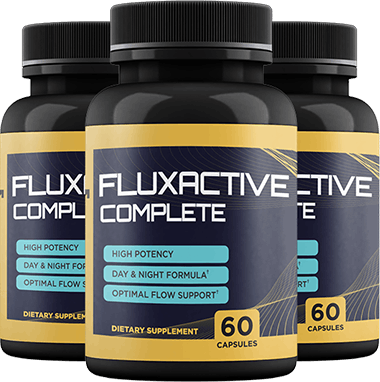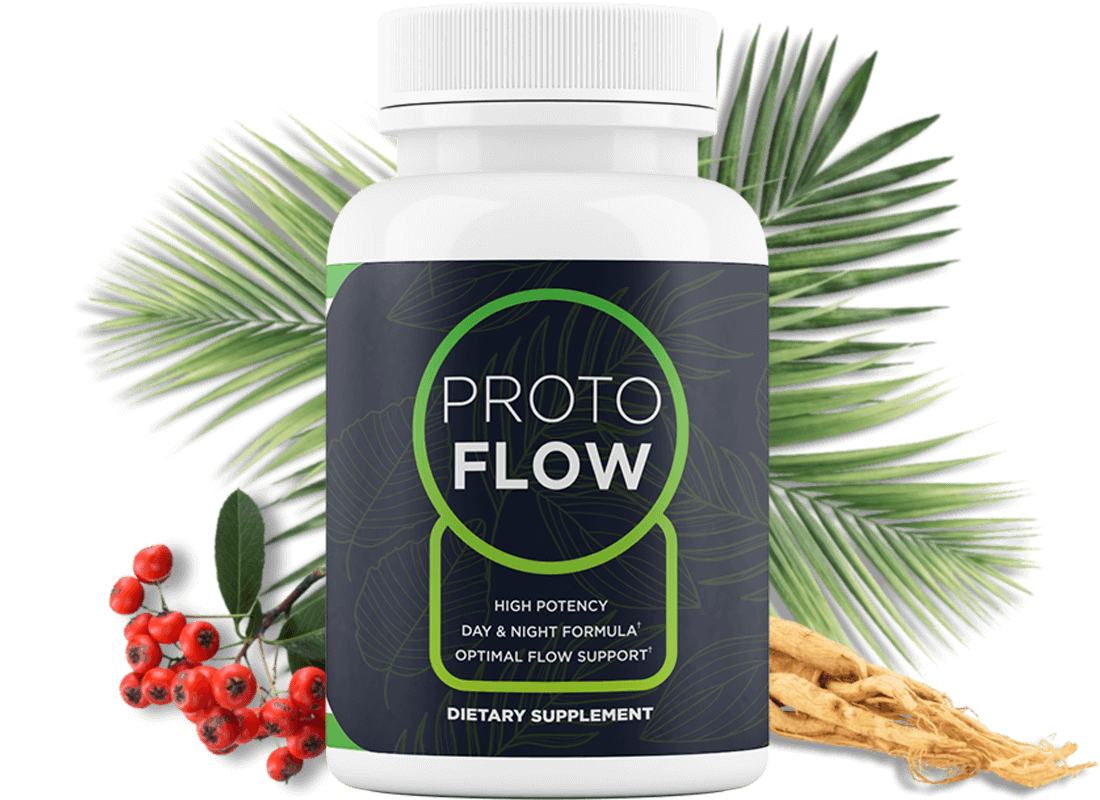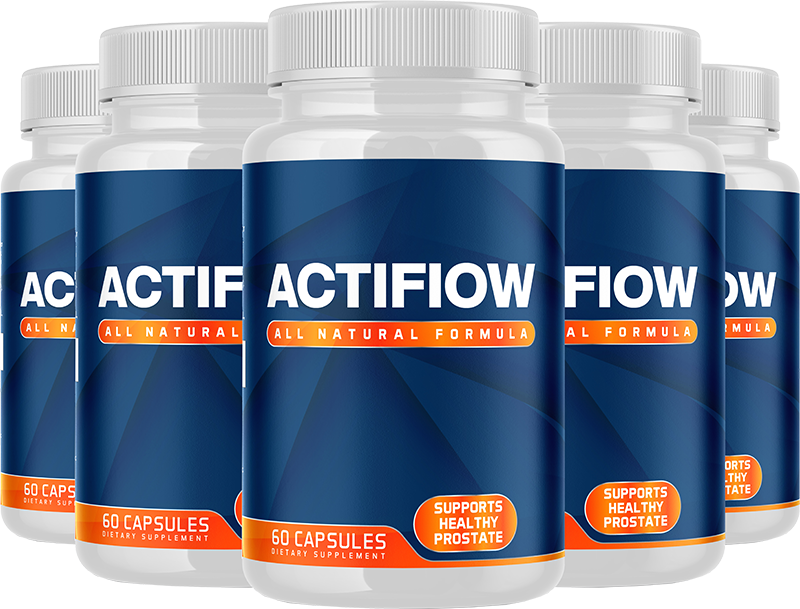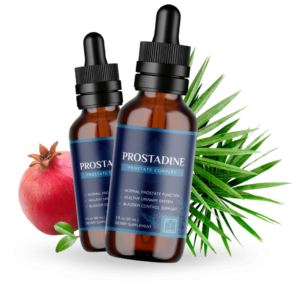
Fluxactive Complete
Fluxactive Complete: 14-in-1 vital prostate wellness formula. Designed to offer complete support. Supports the normal functions of the bladder, prostate and reproductive system
 PROSTADINE
PROSTADINE
The best natural, high-performing supplement you can give your body is prostadine. This novel prostate complex encourages and sustains regular urination with a unique combination of all-natural ingredients. Unlike many other supplements, it has no unfavorable side effects

FrotoFlow
Protoflow 24/7/365 Prostate Support. Vital prostate wellness formula. Designed to offer complete support. Supports the normal functions of the bladder, prostate and reproductive system
Actiflow
ActiFlow is a natural dietary supplement that helps maintain prostate health. It features a unique blend of scientifically proven ingredients that help reduce symptoms of BPH (Benign Prostatic Hyperplasia).
Understanding Enlarged Prostate Symptoms and Causes
An enlarged prostate, also known as benign prostatic hyperplasia (BPH), is a common condition that affects many men as they age. It is important to understand the symptoms and causes of this condition in order to seek appropriate medical attention and treatment. In this article, we will explore what an enlarged prostate is, the various symptoms associated with it, the factors that can contribute to its development, and the potential complications that may arise as a result.
What is an Enlarged Prostate?
An enlarged prostate refers to the abnormal growth of the prostate gland, which is a small organ located below the bladder and surrounding the urethra – the tube that carries urine out of the body. The prostate gland plays a crucial role in the male reproductive system by producing seminal fluid, which is essential for nourishing and transporting sperm. When the prostate becomes enlarged, it can exert pressure on the urethra, leading to a range of symptoms such as frequent urination, difficulty starting or maintaining a urine stream, and a feeling of incomplete bladder emptying.
While an enlarged prostate is a common condition in aging men, it is essential to monitor its progression and manage symptoms effectively to maintain a good quality of life. Treatment options range from lifestyle modifications and medication to surgical procedures, depending on the severity of the symptoms and the impact on daily activities.
Medical Terminology: Benign Prostatic Hyperplasia
Medical professionals often use the term benign prostatic hyperplasia (BPH) to describe an enlarged prostate. The term “benign” indicates that the growth is noncancerous, differentiating it from prostate cancer. “Prostatic” refers to the prostate gland itself, while “hyperplasia” refers to the abnormal increase in the number of cells. Overall, BPH is a common condition among older men and is generally not a cause for concern in terms of cancer risk.
Anatomy of the Prostate
To better understand an enlarged prostate, let’s take a closer look at the anatomy of this essential organ. The prostate gland is about the size of a walnut and consists of several lobes or sections. It surrounds the urethra and is situated just below the bladder. As men age, hormonal changes can cause the prostate gland to grow larger, leading to the development of an enlarged prostate.
The prostate gland is composed of smooth muscle fibers and glandular tissue, responsible for producing the fluid that mixes with sperm to form semen. Its location near the bladder and the urethra allows it to play a crucial role in the male reproductive system. Understanding the intricate anatomy of the prostate can help shed light on the potential complications that may arise when it becomes enlarged, impacting urinary function and quality of life.
Recognizing the Symptoms of an Enlarged Prostate
Identifying the symptoms associated with an enlarged prostate is crucial in order to seek prompt medical intervention. The following are common signs that may indicate the presence of an enlarged prostate:
An enlarged prostate, also known as benign prostatic hyperplasia (BPH), is a common condition in aging men. As the prostate gland grows larger, it can put pressure on the urethra, leading to various symptoms that affect urinary and sexual function. While BPH is not cancerous, its symptoms can significantly impact a man’s quality of life.
Urinary Symptoms
One of the most common symptom categories of an enlarged prostate involves changes in urinary function. Men with an enlarged prostate may experience frequent urination, especially during the night. They may also have trouble starting or stopping the flow of urine, experience a weak or interrupted stream, or feel a sense of incomplete emptying of the bladder after urination.
These urinary symptoms can be bothersome and disruptive, affecting daily activities and sleep patterns. Some men may also develop urinary retention, a condition where they are unable to fully empty their bladder, leading to discomfort and an increased risk of urinary tract infections.
Sexual Dysfunction
In some cases, an enlarged prostate can contribute to sexual dysfunction. Men may experience erectile dysfunction, a reduced sex drive, or difficulties with ejaculation. These symptoms can have a significant impact on a man’s overall quality of life and may warrant consultation with a healthcare professional.
Sexual dysfunction related to BPH can be distressing and may lead to feelings of frustration and embarrassment. It is important for men experiencing these issues to discuss them openly with their healthcare provider to explore treatment options and improve their sexual health.
Other Physical Indications
Beyond urinary and sexual symptoms, an enlarged prostate can manifest in various physical indications. Some men may experience discomfort or pain in the pelvic region, lower back, or hips. Others may notice blood in their urine or semen, which should be investigated by a healthcare provider.
These physical indications can be concerning and may indicate other underlying conditions that require medical attention. It is essential for men experiencing such symptoms to undergo a thorough evaluation by a healthcare professional to determine the cause and appropriate management.
Causes and Risk Factors of an Enlarged Prostate
Understanding the factors that contribute to the development of an enlarged prostate is essential in order to adopt preventive measures and manage the condition effectively. While the exact cause of BPH remains unclear, several factors have been identified as potential contributors.
Age-Related Factors
Age is one of the primary risk factors for the development of an enlarged prostate. As men grow older, hormonal changes, including fluctuations in levels of testosterone and estrogen, can cause the prostate gland to grow larger. It is estimated that approximately 50% of men over the age of 50 have some degree of prostate enlargement, which increases to approximately 90% for men over the age of 80.
Hormonal Changes
Hormonal imbalances or changes can play a significant role in the development of an enlarged prostate. Testosterone, the primary male sex hormone, is converted into dihydrotestosterone (DHT) within the prostate gland. Excessive levels of DHT can promote cell growth in the prostate, leading to an enlarged gland and subsequent symptoms.
Genetic Predisposition
There is evidence to suggest that genetics can influence the risk of developing an enlarged prostate. If a man has a family history of BPH, particularly in his father or brother, he may be at an increased risk of developing the condition himself. Genetic factors can contribute to variations in hormone levels and the overall structure of the prostate gland, making certain individuals more susceptible to an enlargement.
Aside from age, hormonal changes, and genetic predisposition, there are other factors that have been associated with an increased risk of developing an enlarged prostate. One such factor is obesity. Research has shown that men who are overweight or obese are more likely to experience prostate enlargement compared to those with a healthy weight. This may be due to the fact that excess body fat can lead to increased levels of estrogen, which can contribute to prostate growth.
In addition, certain lifestyle choices and habits can also influence the risk of developing an enlarged prostate. For instance, smoking has been linked to an increased risk of BPH. The chemicals in tobacco smoke can cause inflammation and oxidative stress in the prostate, potentially leading to the enlargement of the gland. Similarly, excessive alcohol consumption has been associated with an elevated risk of prostate enlargement. Alcohol can disrupt hormone balance and contribute to inflammation, which can impact the size of the prostate.
Complications Associated with an Enlarged Prostate
An enlarged prostate can lead to various complications that can significantly impact a person’s health and well-being. Understanding these potential complications is crucial in order to seek appropriate medical intervention and minimize the risk of further complications.
One of the complications that can arise from an enlarged prostate is the increased risk of urinary tract infections (UTIs). When the flow of urine is obstructed by the enlarged prostate, it creates an environment where bacteria can thrive and multiply, leading to UTIs. These infections can cause symptoms such as frequent urination, pain or burning during urination, and cloudy or strong-smelling urine. Prompt medical treatment is necessary to prevent the infection from spreading and causing additional complications.
In addition to UTIs, another complication that can occur as a result of an enlarged prostate is the formation of bladder stones. When the prostate is enlarged, it can contribute to urine becoming concentrated in the bladder, leading to the development of hard mineral deposits known as bladder stones. These stones can cause pain, difficulty urinating, blood in the urine, or frequent UTIs. Treatment for bladder stones may involve medication, lifestyle changes, or surgical intervention depending on the severity of the condition.
If left untreated, an enlarged prostate can also lead to kidney damage. When urine flow is obstructed or incomplete, it can cause urine to back up into the kidneys, leading to a condition called hydronephrosis. This can result in kidney damage or infection if not addressed promptly. Close monitoring and appropriate medical intervention are necessary to prevent the progression of kidney complications.
It is important for men who may be experiencing urinary problems or other related symptoms to understand the symptoms and causes of an enlarged prostate. By recognizing the signs and seeking early medical attention, men can receive appropriate treatment and care, thereby minimizing potential complications. Regular check-ups and open communication with healthcare providers can help ensure early detection and effective management of an enlarged prostate, promoting overall health and well-being.
What is the most effective prostate supplement?
Determining the “most effective” prostate supplement can be challenging as effectiveness can vary depending on individual factors such as overall health, specific prostate concerns, and response to ingredients. Additionally, what works well for one person may not work as effectively for another.
However, some prostate supplements have gained popularity and have been supported by research for their potential benefits in promoting prostate health. These include:
- Saw Palmetto: Saw palmetto is one of the most commonly used herbal supplements for prostate health. Research suggests that it may help reduce symptoms of benign prostatic hyperplasia (BPH) such as urinary frequency and urgency.
- Beta-Sitosterol: Beta-sitosterol is a plant sterol that has been shown to improve urinary symptoms associated with BPH. It may help reduce nighttime urination, improve urinary flow, and decrease residual urine volume.
- Pygeum: Pygeum extract, derived from the bark of the African cherry tree, has been traditionally used to support prostate health. Studies suggest that pygeum may help alleviate symptoms of BPH, including nocturia and incomplete bladder emptying.
- Zinc: Zinc is an essential mineral that plays a role in prostate function and may help maintain prostate health. Some research suggests that zinc supplementation may reduce the risk of prostate enlargement and lower urinary tract symptoms.
- Vitamin D: Emerging research suggests a potential link between vitamin D deficiency and prostate health issues, including prostate cancer and BPH. Maintaining adequate vitamin D levels through supplementation may support overall prostate health.
While these supplements have shown promise in promoting prostate health, it’s important to note that individual responses can vary, and more research is needed to fully understand their effectiveness. Additionally, supplements should not be used as a substitute for medical treatment, and it’s essential to consult with a healthcare professional before starting any new supplement regimen, especially if you have underlying health conditions or are taking medications.
What is the #1 important nutrient to shrink your prostate?
The question of the “#1 important nutrient” to shrink the prostate is not straightforward, as there isn’t a single nutrient that universally and definitively shrinks the prostate. However, some nutrients and compounds have shown promise in supporting prostate health and potentially reducing symptoms associated with conditions like benign prostatic hyperplasia (BPH). Among these, beta-sitosterol often stands out as a significant contender.
Beta-sitosterol is a plant sterol found in various fruits, vegetables, nuts, and seeds. It’s been studied for its potential benefits in promoting prostate health and relieving symptoms of BPH. Research suggests that beta-sitosterol may help improve urinary flow, reduce the frequency of urination, and decrease residual urine volume in men with BPH.
While beta-sitosterol shows promise, it’s important to remember that prostate health is influenced by various factors, including lifestyle, diet, genetics, and overall health. Therefore, focusing on a balanced diet rich in fruits, vegetables, whole grains, lean proteins, and healthy fats can provide a wide range of nutrients that support overall prostate health.
Additionally, maintaining a healthy weight, staying physically active, managing stress, and avoiding excessive alcohol consumption and smoking are all important factors in supporting prostate health. If you’re experiencing symptoms of prostate enlargement or other prostate-related issues, it’s crucial to consult with a healthcare professional for proper diagnosis and treatment recommendations. They can provide personalized advice based on your individual health needs and guide you toward the most appropriate treatment options.
What is the Japanese method for shrinking the prostate?
The Japanese method for addressing prostate health often emphasizes a combination of dietary habits, lifestyle factors, and traditional practices. While there isn’t a specific “Japanese method” per se, certain aspects of Japanese culture and dietary patterns have been associated with better prostate health. Here are some elements commonly found in Japanese approaches to prostate health:
- Dietary Choices: Japanese cuisine typically includes a variety of nutrient-rich foods that may benefit prostate health. This includes plenty of vegetables, fruits, seaweed, soy products (like tofu and edamame), fish rich in omega-3 fatty acids (such as salmon, mackerel, and sardines), green tea, and fermented foods like miso and natto. These foods are often low in saturated fats and red meat, which may contribute to prostate issues.
- Soy Consumption: Soy products are a staple in the Japanese diet and are rich in compounds called phytoestrogens, particularly isoflavones. Some research suggests that isoflavones may have protective effects against prostate cancer and may help alleviate symptoms of benign prostatic hyperplasia (BPH).
- Green Tea: Green tea is a popular beverage in Japan and is rich in antioxidants called catechins. Some studies have suggested that green tea consumption may be associated with a reduced risk of prostate cancer and may have anti-inflammatory effects that benefit prostate health.
- Physical Activity: Japanese culture promotes an active lifestyle, with activities like walking, cycling, and gardening being common. Regular physical activity has been linked to better prostate health and may help reduce the risk of developing prostate-related issues.
- Stress Management: Traditional Japanese practices such as meditation, mindfulness, and relaxation techniques are often incorporated into daily life to help manage stress. Chronic stress has been linked to prostate problems, so finding ways to relax and unwind may benefit prostate health.
- Regular Medical Check-ups: In Japan, regular health check-ups are encouraged, including screenings for prostate cancer and other prostate-related issues. Early detection can lead to better outcomes for treatment.
While these practices are part of Japanese culture and lifestyle, it’s important to note that individual results may vary, and more research is needed to fully understand their effectiveness in preventing or treating prostate issues. Additionally, it’s crucial to consult with a healthcare professional for personalized advice and recommendations based on your individual health needs.
Does beta-sitosterol really work for the prostate?
Beta-sitosterol, a plant sterol found in various foods and commonly used in dietary supplements, has been studied for its potential effects on prostate health, particularly in the context of benign prostatic hyperplasia (BPH). BPH is a non-cancerous enlargement of the prostate gland that can lead to urinary symptoms such as frequent urination, urgency, and difficulty emptying the bladder.
Research on beta-sitosterol for prostate health has yielded mixed results:
- Symptom Relief: Some studies suggest that beta-sitosterol supplementation may help alleviate symptoms associated with BPH, such as improved urinary flow rate, decreased urinary frequency, reduced residual urine volume, and overall improvement in quality of life.
- Mechanism of Action: Beta-sitosterol is believed to work by inhibiting the enzyme 5-alpha-reductase, which converts testosterone to dihydrotestosterone (DHT). DHT is involved in prostate growth, and reducing its levels may help mitigate prostate enlargement.
- Clinical Evidence: While some clinical trials have shown positive effects of beta-sitosterol supplementation on BPH symptoms, other studies have found no significant difference compared to placebo. Additionally, the quality of available research varies, with some studies being small-scale or lacking rigorous methodology.
- Individual Response: It’s important to note that individual responses to beta-sitosterol may vary. Some individuals may experience symptom improvement with supplementation, while others may not see significant benefits.
- Safety: Beta-sitosterol is generally considered safe for most people when taken at recommended doses. However, some individuals may experience mild side effects such as gastrointestinal discomfort.
Overall, while beta-sitosterol shows promise as a potential dietary supplement for supporting prostate health and alleviating BPH symptoms, more high-quality research is needed to fully understand its efficacy and mechanisms of action. It’s advisable to consult with a healthcare professional before starting any new supplement regimen, especially if you have underlying health conditions or are taking medications. They can provide personalized advice based on your individual health needs and help you make informed decisions about prostate health management.
5 Best Prostate Supplements
When it comes to prostate health, it’s essential to consider supplements that have been backed by research and have a good reputation. Here are five supplements that are commonly recommended for prostate health:
- Saw Palmetto: Saw palmetto is a popular herbal supplement that has been traditionally used to support prostate health. Some studies suggest that saw palmetto may help alleviate symptoms of benign prostatic hyperplasia (BPH), such as frequent urination and difficulty urinating. It’s believed to work by inhibiting the production of dihydrotestosterone (DHT), a hormone that contributes to prostate enlargement.
- Beta-Sitosterol: Beta-sitosterol is a plant sterol found in many fruits, vegetables, nuts, and seeds. It’s often used as a supplement to support prostate health and relieve symptoms of BPH. Research suggests that beta-sitosterol may help improve urinary flow and reduce the urgency and frequency of urination in men with BPH.
- Pygeum: Pygeum is an herbal extract derived from the bark of the African cherry tree. It has a long history of use in traditional African medicine for treating urinary problems. Pygeum is believed to work by reducing inflammation and improving urinary function. Some studies suggest that pygeum may help relieve symptoms of BPH, such as urinary hesitancy, nocturia, and incomplete emptying of the bladder.
- Zinc: Zinc is an essential mineral that plays a crucial role in prostate health. It’s involved in the production and metabolism of testosterone, as well as the function of the prostate gland. Research suggests that zinc deficiency may be linked to an increased risk of prostate problems, including BPH and prostate cancer. Therefore, ensuring adequate zinc intake through diet or supplementation may be beneficial for maintaining prostate health.
- Vitamin D: Vitamin D is known for its role in bone health, but emerging research suggests that it may also play a role in prostate health. Some studies have found an association between low vitamin D levels and an increased risk of prostate cancer and BPH. However, more research is needed to fully understand the relationship between vitamin D and prostate health. Nevertheless, maintaining optimal vitamin D levels through sun exposure, diet, or supplementation is generally recommended for overall health.
It’s important to note that while these supplements may offer some benefits for prostate health, they should not be used as a substitute for medical treatment. If you’re experiencing symptoms of prostate problems, it’s essential to consult with a healthcare professional for proper diagnosis and treatment. Additionally, always consult with your healthcare provider before starting any new supplement regimen, especially if you have underlying health conditions or are taking medications.
Prostate Supplements in usa
In the USA, there are numerous prostate supplements available, both online and in stores. These supplements often contain a variety of ingredients aimed at supporting prostate health and addressing issues such as benign prostatic hyperplasia (BPH) and other prostate-related conditions. Some popular prostate supplements available in the USA include:
- ProstaGenix: ProstaGenix is a supplement that contains a blend of natural ingredients such as beta-sitosterol, saw palmetto, and pygeum extract. It’s marketed as a formula designed to support prostate health and improve urinary function.
- Prostavol: Prostavol is another popular prostate supplement that contains ingredients like saw palmetto, pumpkin seed extract, and zinc. It’s formulated to help reduce urinary frequency, improve urinary flow, and support overall prostate health.
- ProstateMD: ProstateMD is a supplement that combines ingredients like saw palmetto, beta-sitosterol, and lycopene to support prostate health and reduce symptoms of BPH. It also contains vitamins and minerals such as vitamin D and zinc to provide additional support.
- Super Beta Prostate: Super Beta Prostate is a widely marketed supplement that contains beta-sitosterol as its primary ingredient. It’s promoted as a solution for improving urinary function and reducing symptoms of BPH.
- Prostate Plus: Prostate Plus is a supplement that combines saw palmetto, pumpkin seed extract, and other natural ingredients to promote prostate health and alleviate symptoms of BPH.
These are just a few examples of prostate supplements available in the USA, and there are many more options to choose from. When selecting a prostate supplement, it’s important to carefully read the ingredient list, consider the reputation of the manufacturer, and consult with a healthcare professional if you have any questions or concerns. Additionally, it’s essential to follow the recommended dosage instructions provided by the manufacturer to ensure safety and effectiveness.
how to select Prostate Supplements
Selecting the right prostate supplement can be crucial for addressing specific prostate health concerns effectively. Here’s a step-by-step guide to help you choose the best prostate supplement for your needs:
- Identify Your Needs: Determine the specific prostate health issues you’re looking to address. Common concerns include benign prostatic hyperplasia (BPH), urinary symptoms, inflammation, or overall prostate support.
- Research Ingredients: Look for supplements containing ingredients that have been scientifically studied and shown to support prostate health. Some key ingredients to look for include saw palmetto, beta-sitosterol, pygeum, zinc, vitamin D, and lycopene. Research each ingredient to understand its benefits and potential side effects.
- Check Quality and Purity: Choose supplements from reputable brands that adhere to strict quality control standards and use high-quality, pure ingredients. Look for supplements that have been third-party tested for potency and purity to ensure their safety and efficacy.
- Consider Formulation: Consider whether you prefer capsules, tablets, softgels, or liquid formulations. Choose a formulation that is convenient for you to take and easy to incorporate into your daily routine.
- Read Reviews: Read reviews and testimonials from other users to get an idea of their experiences with the supplement. Look for feedback on its effectiveness, tolerability, and any side effects experienced.
- Consult with Healthcare Provider: Before starting any new supplement regimen, especially if you have underlying health conditions or are taking medications, it’s important to consult with your healthcare provider. They can provide personalized advice based on your medical history and help you determine if a prostate supplement is right for you.
- Consider Cost: Compare prices of different prostate supplements, but remember that quality often comes with a higher price tag. Balance the cost with the quality and reputation of the supplement.
- Start Slowly and Monitor: Once you’ve selected a prostate supplement, start with the recommended dosage and monitor how your body responds. Give it some time to see if you notice any improvements in your symptoms or overall prostate health.
By following these steps, you can make an informed decision when selecting a prostate supplement that best meets your needs and supports your overall prostate health.

Who said a return to perfect prostate health was impossible? Years of enlarged prostate misery addressed in weeks… No more swollen prostate gland – and no more frustrating peeing problems!
Click to see more detail on Video
|
Fluxactive Complete: 14-in-1 vital prostate wellness formula. Designed to offer complete support. Supports the normal functions of the bladder, prostate and reproductive system |
The best natural, high-performing supplement you can give your body is prostadine. This novel prostate complex encourages and sustains regular urination with a unique combination of all-natural ingredients. Unlike many other supplements, it has no unfavorable side effects |
Protoflow 24/7/365 Prostate Support. Vital prostate wellness formula. Designed to offer complete support. Supports the normal functions of the bladder, prostate and reproductive system |










